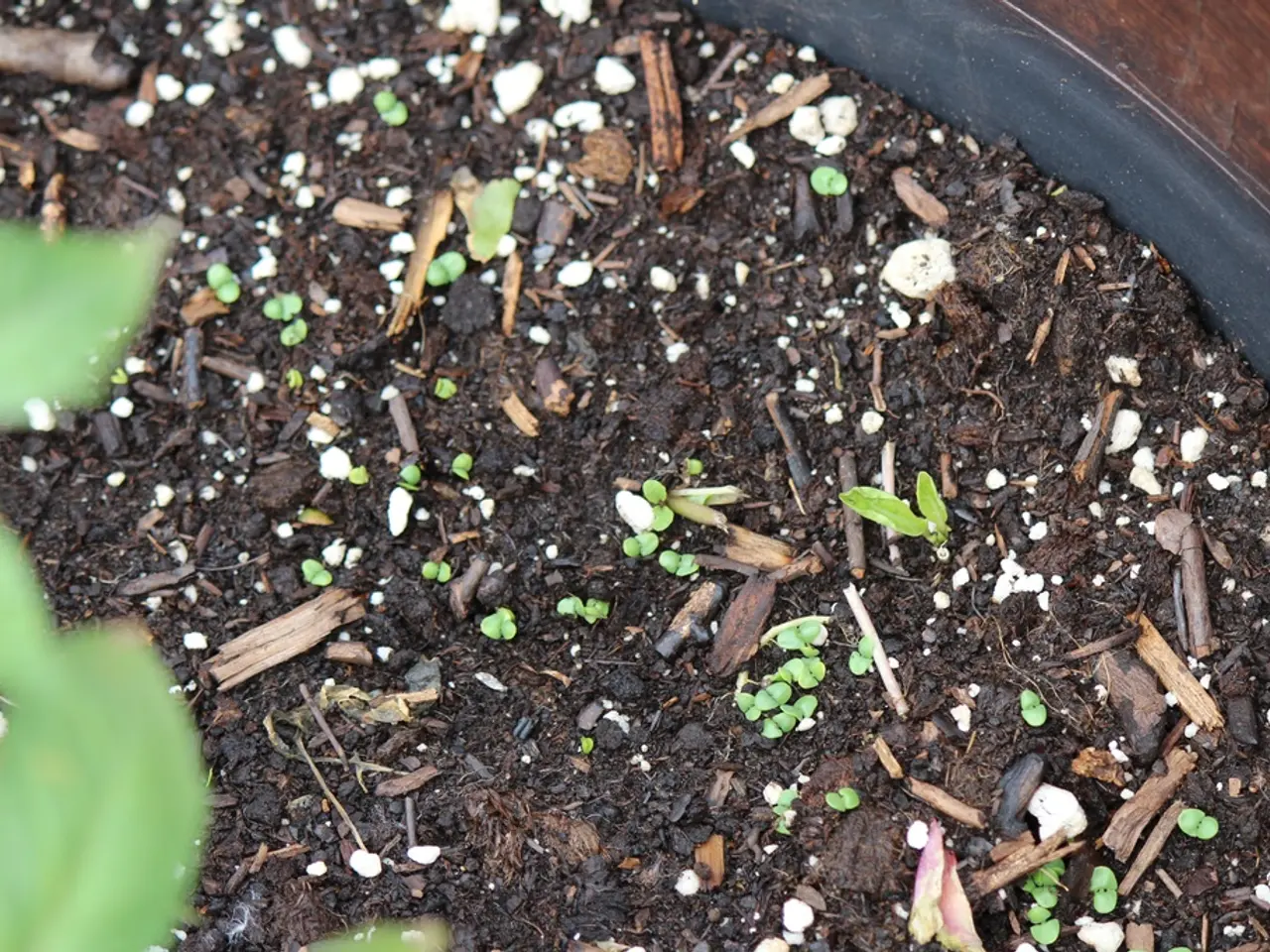Enhancing Soil Health, Ensuring Food Security: Detailed Strategy to Connect Soil Health and Nutritional Stability in India
India is grappling with a significant soil-health crisis, a challenge that extends beyond agriculture and into public health and climate resilience. The issue is rooted in the inefficient use of fertilisers, with granular-urea losses resulting in only 35-40% nitrogen (N) uptake, with the rest volatilising as nitrous oxide or leaching into groundwater [1]. This not only impacts crop growth but also contributes to environmental degradation.
Simultaneously, India's bioeconomy has experienced a substantial growth, with its value ballooning from US$10 billion in 2014 to US$165.7 billion in 2024 [2]. However, despite this economic boom, malnutrition remains a pressing concern. The National Family Health Survey (NFHS-5) conducted in 2019-21 revealed high rates of malnutrition among under-fives, with 35.5% stunting, 32.1% under-weight, and 19.3% wasting [3].
This situation is further compounded by the persistent issue of "hidden hunger," causing an estimated 5.2 million Disability-Adjusted Life Years (DALYs) annually due to zinc/iron deficiency-related morbidity [4]. This hidden hunger is linked to the cultivation of micronutrient-poor crops grown in degraded soils.
The agriculture subsidy regime in India has been critically analysed for creating distortions, with one such distortion being the skewed N:P:K application ratio in many districts due to Urea being cheaper than P & K [5]. This imbalance has led to nutrient imbalances in the soil and, consequently, in the crops.
Women constitute a significant portion of labour in India's agriculture sector but hold less than 13% of land titles, limiting their access to formal soil-testing and credit [6]. This gender disparity exacerbates the soil-health crisis and hinders efforts to address hidden hunger.
To tackle these challenges, India needs a multidimensional strategy focused on integrated governance, science-driven agricultural practices, farmer education, and innovation in crop nutrition.
1. **Integrated Governance and Policy Coordination:** An Inter-ministerial Soil and Nutrition Security Council involving key ministries such as Agriculture, Health and Family Welfare, Rural Development, and Environment should be established to coordinate investments and harmonise policies related to fertilizer use, environment, and nutrition [1].
2. **Soil Health Restoration and Science-Based Management:** Shifting from indiscriminate fertilizer use to rigorous soil testing and customised, nutrient-specific fertilization that addresses soil deficiencies can help restore soil health, improve crop nutritional content, and prevent soil degradation caused by imbalanced fertilization [3][1].
3. **Promotion of Biofortified Crops and Crop Diversification:** Encouraging the cultivation of bio-fortified crops genetically enhanced to contain higher levels of vitamins and minerals can combat micronutrient deficiencies prevalent in rural populations [2]. Additionally, integrating millets and other nutrient-rich crops can improve dietary diversity and nutrition security [4].
4. **Farmer Education and Behaviour Change:** Launching massive information, education, and communication (IEC) campaigns through platforms like Doordarshan Krishi, Krishi Vigyan Kendras (KVKs), Farmer Producer Organizations (FPOs), and Self-Help Groups (SHGs) can promote balanced fertilizer use and good soil stewardship [1]. Community-led initiatives similar to Swachh Bharat but for soils can reinforce sustainable soil management at the grassroots level [1].
5. **Public-Private Partnerships:** Incentivising collaborations like the ICRIER-OCP Nutricrops partnership that develops data-driven, region-specific soil nutrition solutions to enhance crop yield and nutrient content should be encouraged [1][3]. Such partnerships should be aligned with Corporate Social Responsibility and Sustainable Development Goals.
6. **Linking to Sustainable Development Goals:** Improving soil health and nutrient management supports SDG-2 (Zero Hunger) by enhancing food quality and availability, and SDG-13 (Climate Action) by promoting sustainable agricultural practices that protect the environment [3].
By adopting a soil-first strategy that combines policy reforms, scientific inputs, farmer empowerment, and innovation, India can effectively tackle hidden hunger caused by micronutrient-poor crops grown in degraded soils and secure long-term nutrition for its population [5][1][3].
- To ensure the efficient use of fertilizers and mitigate the environmental impact, the establishment of an Inter-ministerial Soil and Nutrition Security Council, involving Agriculture, Health, Environment, and Rural Development ministries, is crucial for coordinating investments and policy harmonization [1].
- Implementing science-based soil testing, customized, nutrient-specific fertilization, and addressing soil deficiencies can help restore soil health, improve crop nutritional content, prevent soil degradation, and combat micronutrient deficiencies [3][1].
- Promoting biofortified crops and crop diversification, with a focus on millets and other nutrient-rich crops, can improve dietary diversity, enhance nutrition security, and combat micronutrient deficiencies prevalent in rural populations [2][4].




